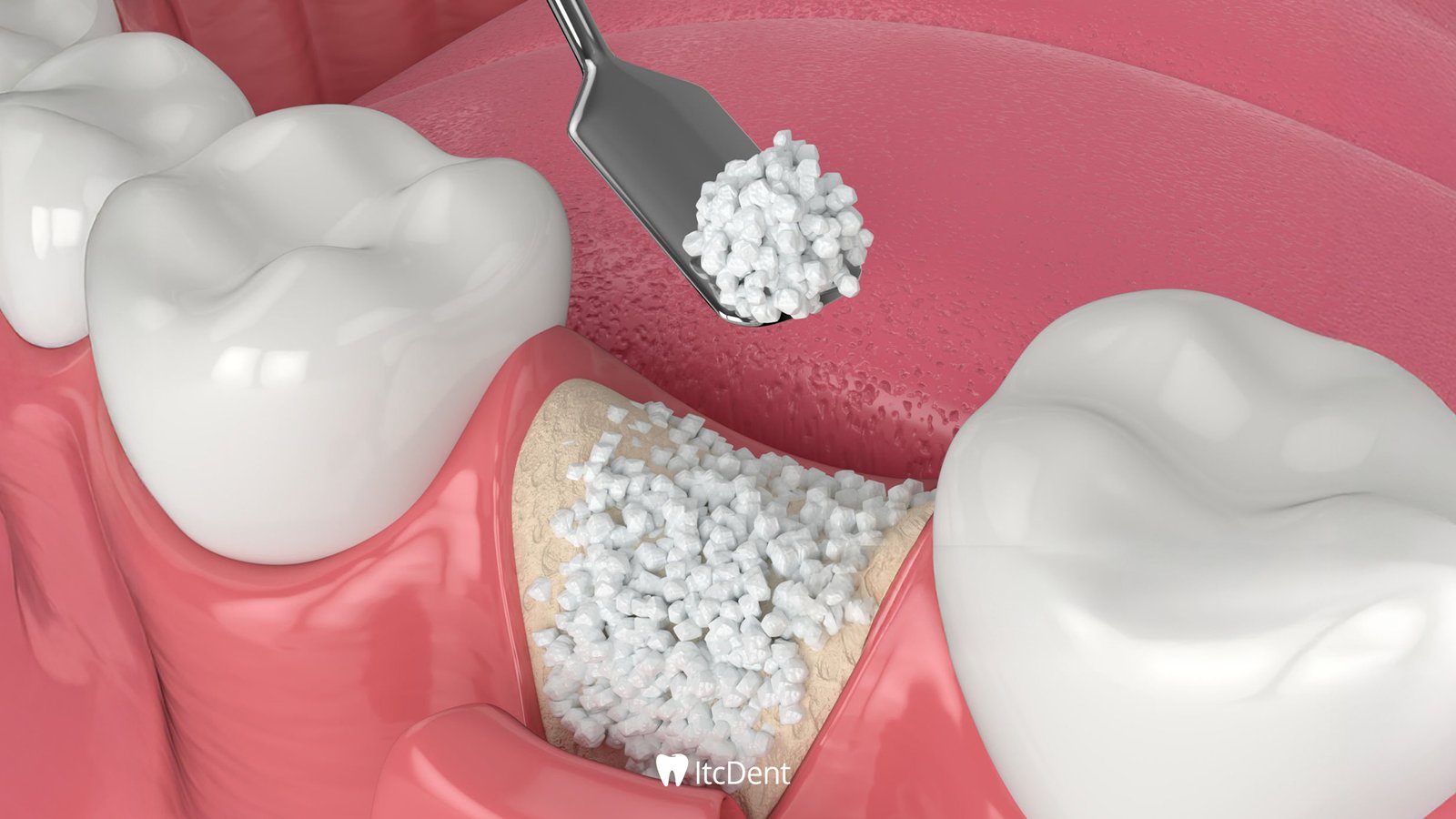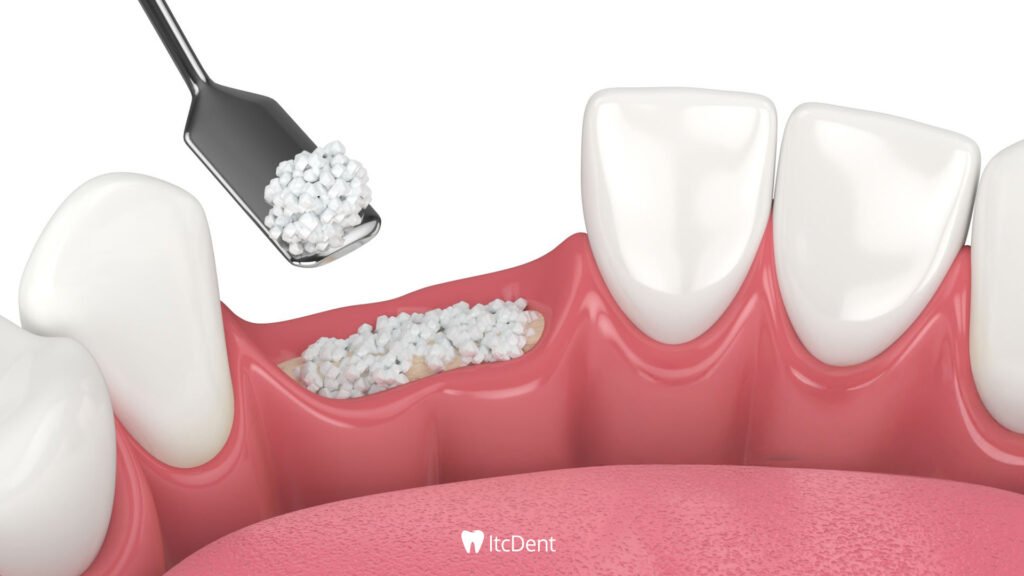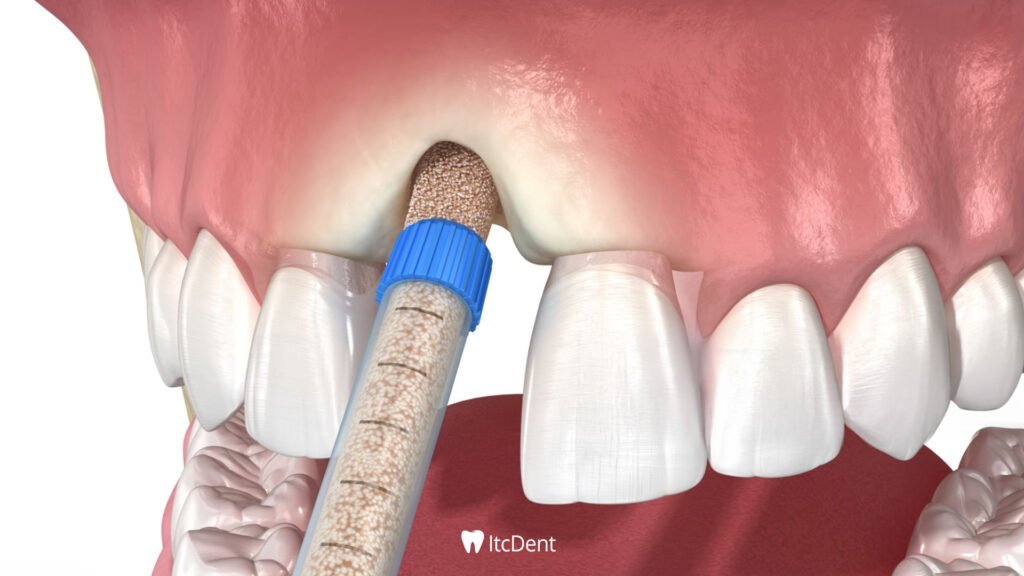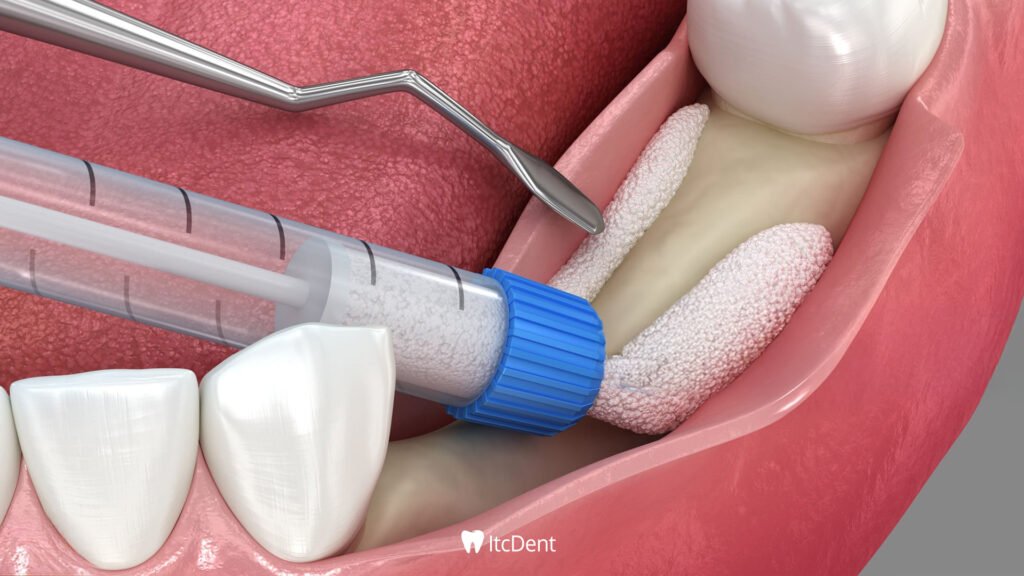
What is Bone Grafting and How is it Done?
While tooth loss often seems like a purely aesthetic issue, it actually has far more profound implications. Over time, missing teeth negatively impact chewing function, make speaking difficult, and, most importantly, can cause resorption of the jawbone. This is because tooth roots send a warning signal to the bone: “I’m here, keep working!” When a tooth is extracted, this signal is lost, and the bone begins to shrink over time. This can both alter facial features and make treatments like implants more difficult.
This is precisely where one of the miraculous solutions of modern dentistry comes into play: bone grafting. Simply put, bone grafting is a specialized procedure used to rebuild and strengthen lost or weakened jawbone, making it suitable for advanced treatments like implants. Today, thanks to this method, it is possible for people who have lost teeth to regain a healthy mouth, both aesthetically and functionally.
This procedure shouldn’t be thought of as simply “adding a piece of bone.” Bone grafting is a meticulous and scientific procedure in dentistry that supports the healing of natural tissues and stimulates the body’s own regenerative powers. When performed with proper planning and the right techniques, it rebuilds not only bone but also a person’s self-confidence.
What is Bone Grafting?
Bone grafting, as the name suggests, is a treatment that helps rebuild the jawbone. Loss of teeth, trauma, or long-term gum disease can cause jawbone loss. This weakens the bone tissue, leading to both aesthetic and functional problems over time. This is where bone grafting comes in.

During this procedure, graft material, derived from the body’s own bone or specially prepared biological materials, is placed in the missing or weak area of the jawbone. This material acts like a “scaffold”; the body’s own cells proliferate around this graft, and over time, new, living bone tissue forms.
Thanks to bone grafting, the jawbone is strengthened not only in volume but also in strength. This provides a solid foundation for future implant applications. In short, bone grafting gives the jawbone a second chance—a healing process that requires patience and diligence, restoring both aesthetic appearance and chewing function.
Why Is a Bone Graft Performed?
Many people wonder, “Is a bone graft really necessary, and is it performed on every patient?” This procedure isn’t mandatory for everyone; however, if the jawbone has weakened or thinned over time, it is essential for successful treatment. Without a solid foundation, it’s impossible to place a dental implant or achieve an aesthetically pleasing smile.
The most common cause of jawbone loss is the prolonged absence of treatment after a tooth extraction. When the tooth root is removed, the bone in that area begins to shrink and resorb over time because it no longer receives stimulation. This is a natural response of the body; unused tissue weakens. However, this process makes it more difficult to place implants in the future.
Sometimes, the problem begins in the gums. Especially advanced gum disease (periodontitis) can progress to the bone, weakening the tissue there. As the infection progresses, the supporting tissues that hold the teeth are also damaged, and the jawbone thins over time.
Trauma or accidents can also be another cause. A sharp blow to the jaw can damage not only the teeth but also the bone structure. Some people even have congenital bone deficiencies, meaning their jawbone is genetically underdeveloped.

In What Situations Is Bone Grafting Used?
Bone grafting can be performed not only before dental implants but also for other treatments. For example:
- Graft material can be placed in the extraction cavity to prevent bone loss after tooth extraction.
- It can be performed to increase bone volume before implants.
- It can be used during sinus lift surgery if there is insufficient bone in the upper jaw.
- In periodontal treatments, bone loss due to gum disease can be repaired.
Materials Used in Bone Grafting
The materials used in bone grafting can vary depending on the patient’s needs and the physician’s preferences. One of the most natural and body-compatible methods is autobone grafting, which uses the patient’s own bone. In this method, a small piece of bone, usually taken from the patient’s chin, jawbone, or hip, is transplanted to the missing area. In some cases, donated human bone, called allograft, sterilized and rendered safe in specialized laboratories, is preferred. These materials are readily accepted by the body and promote new bone formation.
Xenograft, on the other hand, is typically performed using natural-based materials derived from bovine bone. Once implanted, these materials integrate with the jawbone over time, creating a strong structure. Today, with advancements in technology, synthetic grafts, that is, artificially produced biocompatible materials, have also become widely used.
These materials, which contain calcium phosphate or ceramic, are known for their low risk of infection and rapid healing. In short, each graft type has its own advantages, and the choice of which graft to use is carefully determined by the patient’s bone structure and treatment plan.

How Is a Bone Graft Performed?
While the bone graft procedure may sound complex, it’s actually quite comfortable and controlled when performed by an experienced physician. It’s usually performed under local anesthesia, meaning it’s completely painless. First, your physician thoroughly assesses the condition of your jawbone; this is typically done using a panoramic X-ray or 3D CT scan. The area to be treated is then carefully prepared, any infected tissue is removed, and a healthy foundation is created.
The selected graft material, whether taken from your own bone or prepared in a laboratory, is then carefully placed in the missing area. Fine stitches or a special membrane are typically used to stabilize the graft during this phase. Once the procedure is complete, the body’s natural healing process begins. Within approximately 3 to 6 months, the graft material integrates with the bone, and new bone tissue begins to form.
Bone Graft Prices
Bone graft prices vary from patient to patient, as each treatment is planned individually. Many factors, including the extent of jawbone loss, the area to be treated, the type of graft material to be used, and the complexity of the procedure, influence the total cost. In some cases, grafting to a small area may be sufficient, while in other cases, reconstruction of a larger area may be necessary. This naturally affects both treatment time and cost.
Furthermore, the source of the material used, whether it is the patient’s own bone, a specialized graft prepared in a laboratory, or a synthetic material, is a significant factor in determining the price. Furthermore, the equipment of the clinic where the procedure is performed and the physician’s level of expertise should also be taken into consideration. Bone grafting is a treatment that requires precision and experience; the most important factor here is not only the price but also the safe and successful performance of the treatment.

